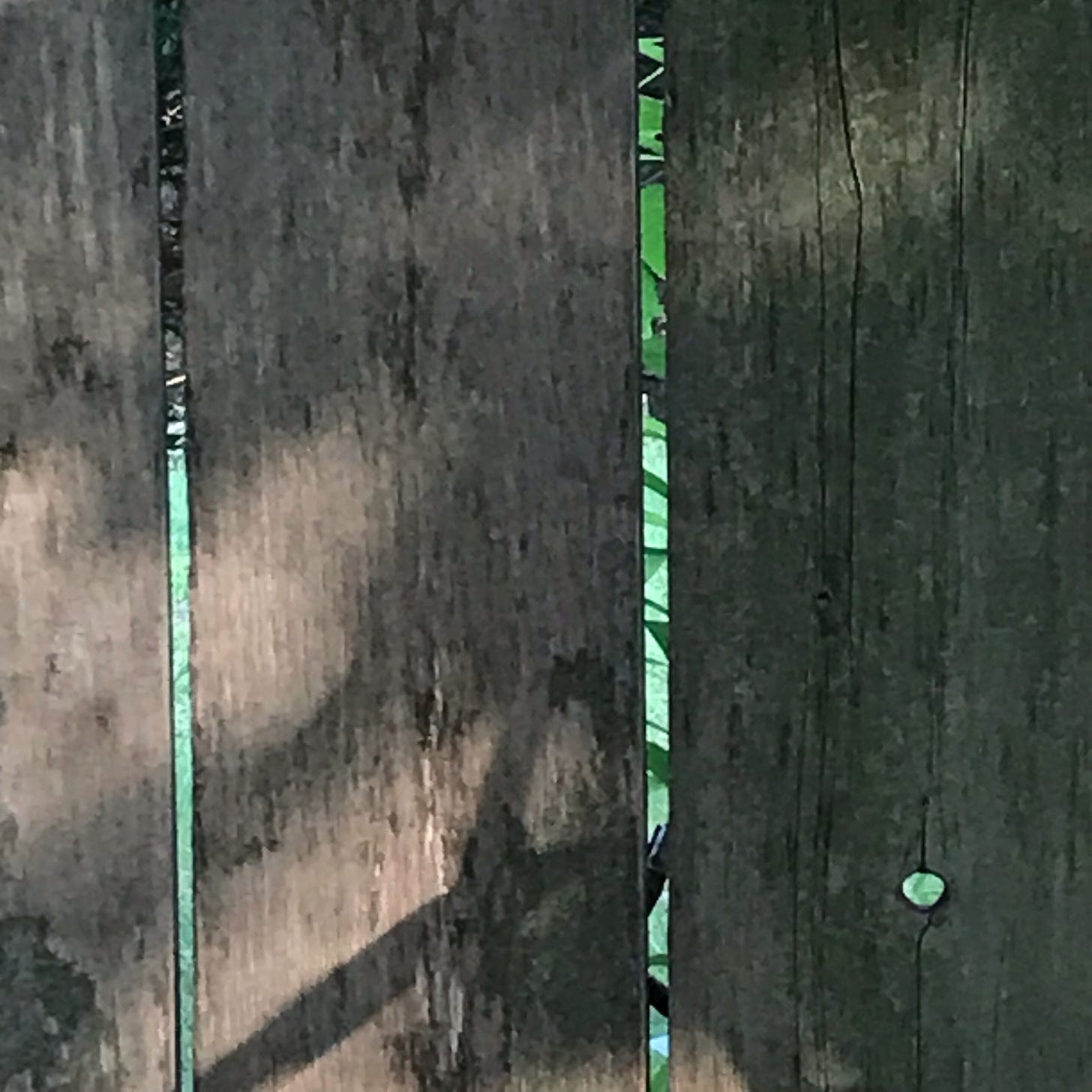When my wife and I lived in the city and took frequent strolls around our neighborhood, I noticed something interesting when walking past the barricade fences that some property owners, on corner lots in particular, erected for back yard privacy. The fences typically featured closely spaced vertical wood pickets separated by narrow spaces.
Just to stand still and look at them, these fences effectively blocked from view the yard spaces behind them. However, as I walked by at a comfortable pace, when I looked to the side, I noticed that the narrow gaps between the fence pickets would merge to form a complete picture of the yard space beyond. All those little gaps, when seen through in rapid sequence, added up to a much larger opening through which it was possible to see. However, if I paused a moment, visibility dropped to zero again and I was looking at a plain wooden fence with cracks between the boards. If I resumed walking, the opening would reappear.
Seemed odd to me that just by moving and adjusting my depth of visual focus, I could literally see through those wooden fences.
Growing up, I probably paid more attention to my vision than most, owing to ongoing amblyopia-associated eye troubles and vision problems. Having gone through eye patches, strangely disorienting prism glasses, colored plastic dividing the TV screen into red and green halves and other well-intentioned interventions, it’s probably safe to assume I spent more time than most people learning how to see. Perhaps related to this, throughout my childhood I was also fascinated by optical illusions. I borrowed books from the library to explore them. I gave special attention to them at my favorite science museum in Toronto.
Certain illusions rely on the eye assembling rapidly sequenced images. 19th century zoetrope toys, for example, an early forerunner in some ways of motion pictures, seem to rely on a phenomenon closely related to what I was observing as I walked along. Television relies on similar effects to create its illusions. The big old cathode ray picture tubes I grew up with presented the viewer with 525 lines of data, refreshed 60 times a second. If you’d like to explore this, you might want to click on links provided here or here.
However, what I saw through the fence was not an illusion — at least, in our consensus reality what I saw is typically designated as “real”. An empty plastic lawn chair, say, on chemically treated turf grass. This is the USA, after all: What could be more real than that? The fact that similar processes can be involved in generating illusions and gathering real-world data fascinates me. As long as I kept moving, I could accurately report, for example, whether or not by some miracle somebody happened to be sitting in said lawn chair behind said fence. Come to think, if there was an illusion, it was arguably more on the side of these homeowners and their sense of privacy.
But what really interests me in all of this — and I hope this doesn’t seem repetitive but it I think bears repeating — is the sense I’m getting of a connection between the processes that generate the illusion in the zoetrope and the fact that we can somehow assemble a coherent picture of a more-or-less “real” world from narrow slices of image leaking out from between fence pickets. As long as we keep moving.
Generating illusions / seeing through barriers. It’s an interesting dichotomy.
And here’s the even bigger deal: Let’s say I’m walking along and when I turn my head to the right I can see through fences as just described.
But who’s to say that I’m not also seeing through fences when I turn to the left and find an apparently unobstructed view of the houses on the other side of the street?
In other words, maybe I’ve been “seeing” so long I no longer even notice the presence of the barriers and obstructions that I’m seeing through. In fact the more I think about it, the likelier it seems that without knowing it, I’m assembling some very narrow slices of data in a habitual way, and then mistaking the result for the whole enchilada, for “reality.”
I’m starting to wonder if perhaps unseen fences of some kind surround me. And I have to ask, to complete the analogy, if perhaps I’m engaged in some kind of “movement” that fuses otherwise incomprehensible slices of vision into a continuous and apparently coherent sensory experience.
If so, I also wonder what would happen if I…
…somehow…
…just…
…stopped.
Would the machinery of illusion become inescapably present, as when the zoetrope stops spinning? Would I finally be able to discern the precise relationship between image and reality? If the illusions cease, what’s left? Anything? Me?




